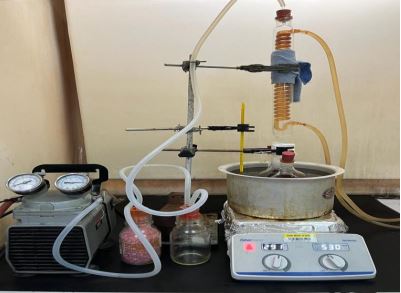Physical Characterization of Modified Palm Oil with Hybrid Additives Nanofluids
DOI:
https://doi.org/10.37934/armne.15.1.4151Keywords:
Hybrid-nanofluids, activated carbon, tungsten disulphide, modified palm oil, physiochemical propertiesAbstract
The common use of petroleum-based metalworking fluids (MWFs) in industry harms the environment and human beings. The biggest disadvantage of RBD palm oil is its low thermal-oxidative stability. As a result, the goal of this research is to create an innovation for palm oil based MWFs. The new creation of modified palm oils (MPOs) has been produced by a transesterification process with palm methyl ester to trimethylolpropane molar ratios of 3.5:1. Later, at a concentration of 0.025wt.%, the MPOs were mixed with single and hybrid additives such as activated carbon (AC) (MPOa), tungsten disulphide (WS2) (MPOw) and hybrid AC with WS2 (MPOaw). The physicochemical parameters of MPOs were studied, including viscosity, and acid value. The physicochemical properties were evaluated as per ASTM standards over a period of 4 weeks to check the state of lubricant and observable changes in the properties during this period According to the findings, MPOaw shows enhanced thermal (high viscosity index 365-387) and oxidative stability (lubricant storage). Moreover, MPOaw recorded has higher antioxidant properties that can help prevent or slow down the oxidation process, reducing the production of acids and subsequently lowering the acid value (0.14 -0.19 mg NaOH/g). In conclusion, it has been proven that MPOaw has the best performance and the potential to have a positive effect on the industry as a sustainable MWF for machining processes.









